 Handling Tenant Reported Maintenance Issues Rights And Best Practices
Handling Tenant Reported Maintenance Issues Rights And Best Practices
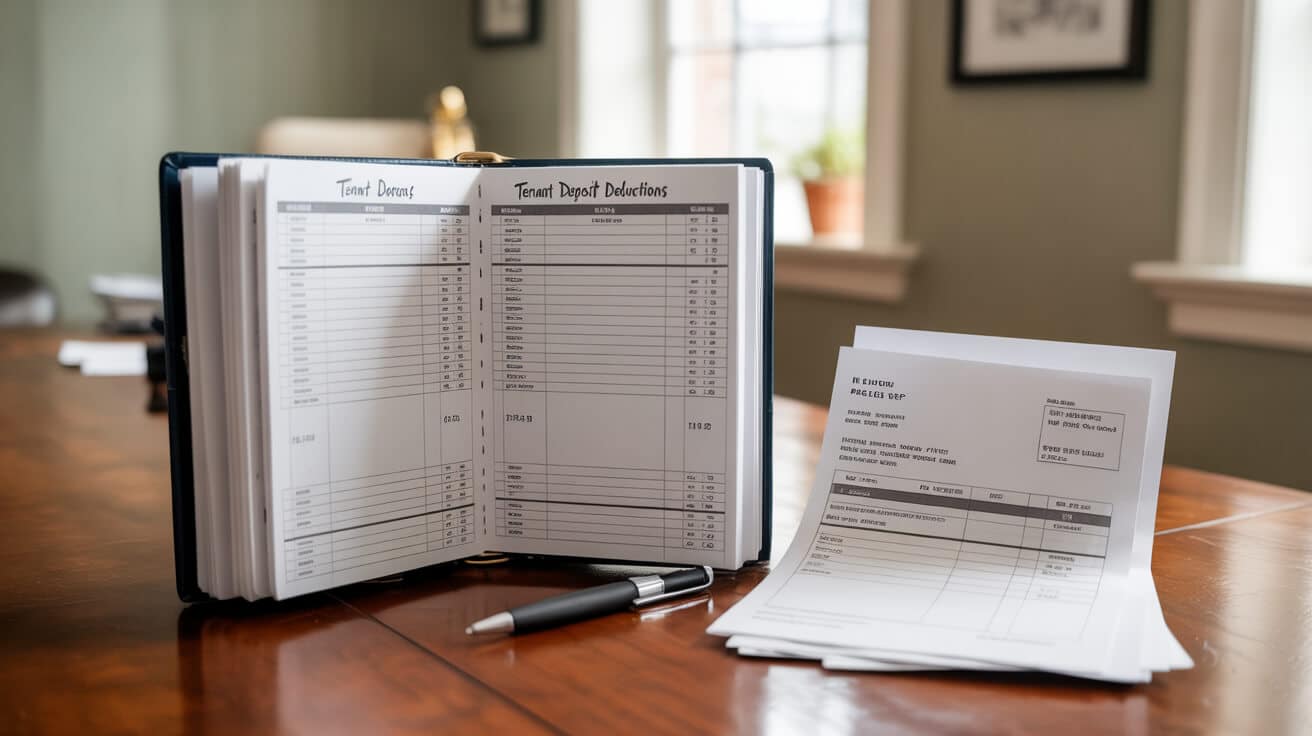
Why Treating Tenant-Reported Maintenance as Strategy, Not Chore, Shields Your Asset and Your Reputation
A tenant reporting a maintenance issue isn’t just a routine “to-do”—it marks a turning point in how your property is perceived, protected, and ultimately valued. That text or email about a leak, mould patch, or strange noise doesn’t just flag a job for your maintenance list; it’s a trigger that signals your professionalism to tenants, agents, insurers, and local authorities in one shot. The real question isn’t whether you’ll fix a problem, but how fast, how transparently, and how well you’ll handle it—because that’s what builds your reputation (or eats away at it, fast).
The way you respond to maintenance is the way tenants, regulators, and even future investors judge your operation.
There’s a big difference between property owners who treat tenant communication as casual (“I’ll get to it when I can”) and those who treat every report as a compliance checkpoint and a service opportunity. Delays, absent records, or unstructured workflows are a golden invitation to disputes, negative reviews, and—in the hands of increasingly empowered tenants—regulatory intervention. But the flip side is immense: the landlords and agents who run maintenance like a business unit, with digital trails and clear protocols, consistently see stronger asset values, fewer complaints, and better insurance outcomes.
You’re not just responsible for repairs; you’re managing risk and reputation every single time a tenant brings an issue to light. Being slow, casual, or disconnected is asking for costs and headaches—and in today’s compliance-driven market, it’s not a gamble worth making.
What Repairs Are Landlords Legally Responsible For—and Why Do Many Get Tripped Up?

In England and Wales, the legal duties on landlords are crystal clear: you’re responsible for repairing the property’s structure and exterior (think roof, walls, windows, doors), the plumbing, sanitation and heating, and pretty much all permanent installations that keep a home healthy and safe. These duties are laid out in law—primarily Sections 11-16 of the Landlord and Tenant Act 1985—and further reinforced by gas, electrical, and fire safety requirements. Side note: these legal expectations can’t be signed away in a tenancy agreement.
Yet for all the clear writing in statutes, what derails most landlords and agents isn’t a lack of knowledge, it’s the basics: slack record-keeping, lost certificates, and unclear communication.
Almost every dispute comes down to a lack of records, not a lack of repairs. (MyDeposits, [www.mydeposits.co.uk](https://www.mydeposits.co.uk/blogs/tenant-looking-to-keep-evidence-of-their-property))
If you can’t produce a safety certificate, proof of a reported fix, or date-stamped tenant correspondence, your position weakens instantly with deposit schemes, the courts, or the council. Tenants are savvier than ever and quick to use this gap to their advantage.
Your Legal Safety Net:
- Digitally store gas safety, EICR, EPC, and insurance documents.
- Log every interaction about maintenance—call, text, photo, or email—ideally with time and date.
- Confirm fixes in writing and keep both before/after images.
- Set up a routine for documenting even “minor” fixes, as they often escalate if overlooked.
A rock-solid, digital-first paper trail isn’t overkill. It’s the only thing that stands between you and nasty surprises—because regulators don’t take “my builder mentioned it was sorted” as evidence.
Which Repairs Are a Landlord’s Duty—and Where Your Goodwill Can Backfire

You’re responsible for anything relating to the structure, main services (water, gas, electrics), heating, hot water, and communal areas in blocks of flats. That list stays with you even if accidental or tenant-caused damage is suspected—unless and until clear evidence says otherwise.
A classic trap is thinking “little” fixes—like extractor fan failures, blocked gutters, dripping taps, or persistently damp corners—aren’t your job, or can be deferred until a major inspection. Not only does this worsen repairs and increase costs, but it leaves you exposed to formal complaints. Review sites and advocacy organisations have caught on: over a third of complaints centre around damp, which nearly always traces back to incomplete maintenance, not bad tenant habits (Shelter).
Ignoring a ‘small’ issue becomes a big evidence problem if the tenant reports damp, damage, or loss later.
Pro Moves for Owners and Agents:
- Categorise and log: Emergencies vs. urgent vs. routine—don’t wing it.
- Document property condition with inventories and mid-tenancy inspections—especially for kitchens, bathrooms, windows, and heating.
- Give tenants a single, consistent channel to report issues (portal, phone, or email alias)—and acknowledge every report, even if duplicated.
Favouring convenience over process (“just text me if it happens again”) often means you miss or forget a key step when it counts. Prioritise traceability over ad hoc goodwill—good intentions rarely win at tribunal.
Why Response Speed and Priority Ranking are Non-Negotiables

In maintenance, timing is leverage. The property sector runs on “reasonable timeframes”—but the bar isn’t as lenient as some believe. If you leave a heating breakdown, power fault, or significant leak waiting more than a couple of days, you expose yourself to compensation claims, rent repayment orders, and escalating oversight from licencing authorities. Industry best practice says emergencies (gas, flood, power loss) should be actioned inside 24 hours, urgent issues (heating, hot water, broken main doors/locks, non-flood leaks) inside three days, and everything else within a month.
Every unlogged delay is a compliance risk—tenants and agents won’t forget who dropped the ball.
How to Win the Compliance Race:
- Timestamp every repair report; email receipts are your friend.
- Assign a true urgency rank as soon as you receive a report—not after you “have a look.”
- Confirm timeframes and progress in writing—template emails save hours and stress.
- When each repair is finished, follow up for evidence *and* satisfaction.
Want a trust signal for tenants and regulators? Prompt, documented action is unbeatable. The longer issues linger, the more vulnerable you are to complaints, 1-star reviews, and intervention.
Documentation: The Unsung Hero That Ends Arguments, Not Just Jobs
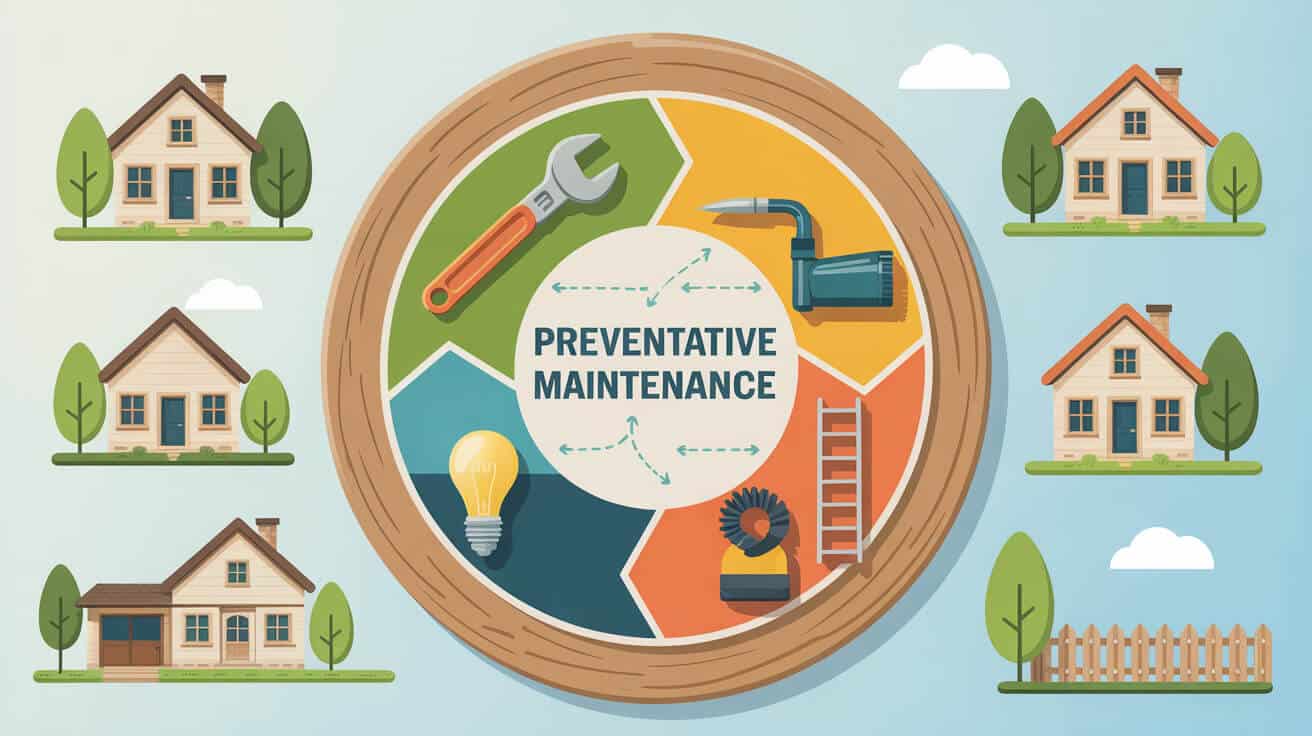
No matter how good your memory or intent, disputes always come down to evidence. Tenancy deposit schemes, ombudsmen, and courts are clear: if you can’t show a digital trail of what was reported, what was agreed, and what was done (with dates and proof), your arguments wobble. Stories rarely beat screenshots.
A digital-first approach is now the standard, not a bonus. Even basic property or maintenance platforms let you store photo logs, upload communication, track costs, and archive sign-offs—most are affordable or free.
When in doubt, authorities rule for the party with the clearest, most complete record, not the loudest complaint. (TDS Dispute Centre, [www.tenancydepositscheme.com](https://www.tenancydepositscheme.com/news/blogs/deposit-disputes-and-evidence))
Practical Evidence Habits:
- Use centralised platforms (Fixflo, Landlord Vision, bespoke CRMs) for reporting, photo uploads, and updates.
- Always attach before-and-after photos and have tenants confirm jobs in writing where possible.
- Back up records to the cloud and store for at least six years—disputes don’t follow your filing cabinet.
Great documentation is the cheapest insurance you’ll ever buy. Put processes above promises, and disputes will shrink to a formality.
Why Centralising Maintenance Intake is the Safest Policy Upgrade
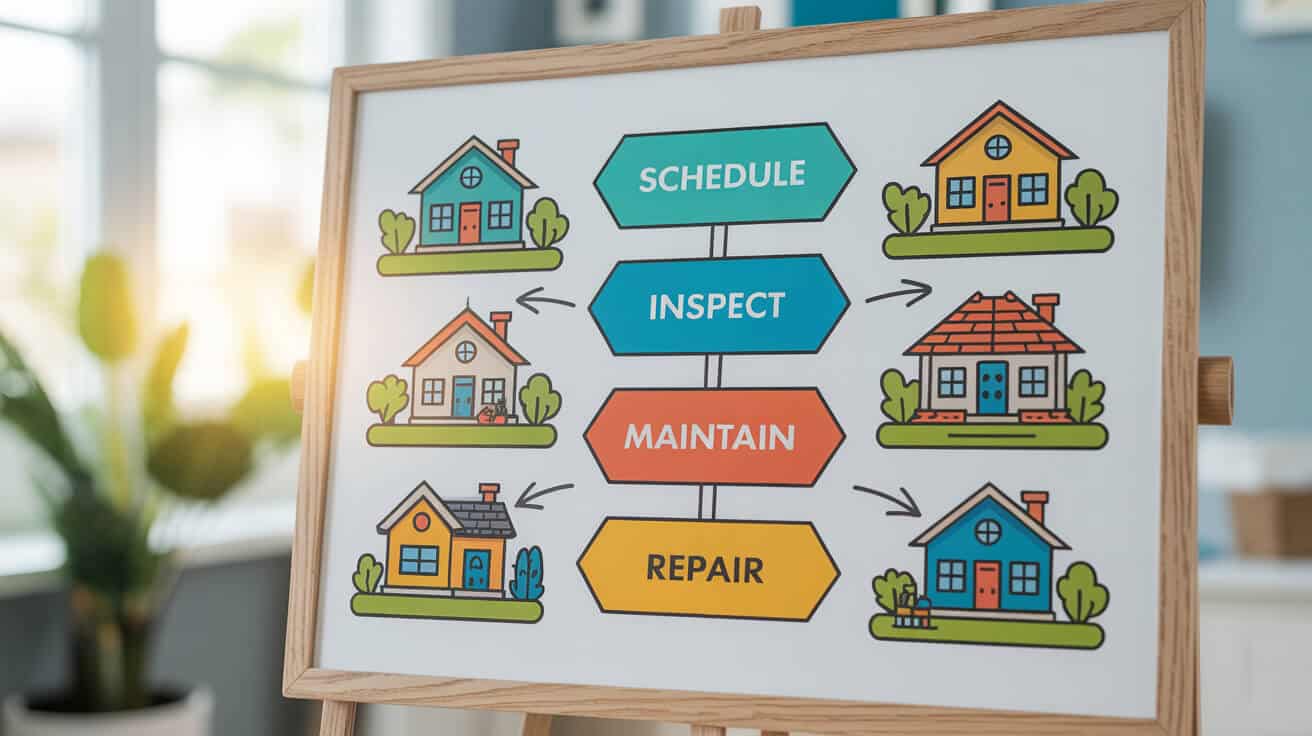
If you’re still fielding repair requests by random text, WhatsApp, or “left a note”—stop. Fragmented systems waste time, create risk, and tank tenant confidence. Centralising your intake, whether via a branded portal, web form, or even a dedicated inbox for maintenance, pays off in consistency and protection.
The gold standard is a digital platform where tenants submit full details: property address, category of issue, urgency, description, and photo evidence. Two early wins follow: a) you never miss or misplace a report, and b) every stakeholder—tenants, agents, regulators—can see and trust the audit trail.
A centralised, receipt-based system is the #1 safeguard against missed messages, lost time, and deposit claims. ([Gov.uk repairs guidance](https://www.gov.uk/private-renting/repairs))
What Strong Intake Looks Like:
- Each issue requires full details—no half-baked “there’s a damp patch somewhere”.
- Every submission gets an automated receipt for tenant proof.
- Progress and completion status are updated in real time (email or portal notifications).
Smart intake protocols give you speed, control, and credibility—while setting clear boundaries with tenants and downstream service partners. It’s not “tech for tech’s sake” but ironclad risk management for anyone managing more than one property.
How Triage and Job Allocation Build Real Ownership (Not More Headaches)
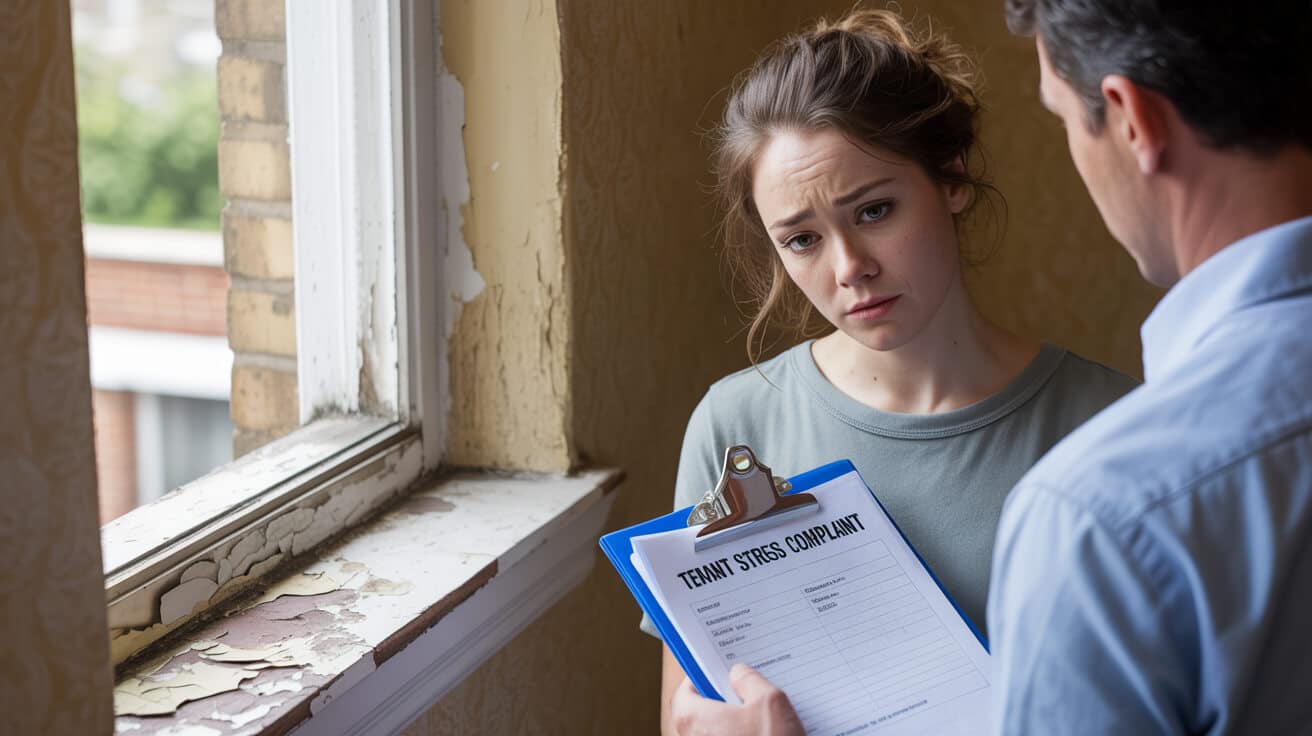
Responding fast to everything isn’t realistic—or smart. What matters is triaging accurately so emergencies jump the queue, urgent jobs are batched and tracked, and slow-burn issues are scheduled, not forgotten.
Here’s a winning ticket:
- Float anything health-threatening (flood, fire, gas, main door security, power loss) straight to top tier—immediate action, full log, and real-time update.
- Urgent jobs (heating off, leak but not flooding, faulty locks, broken main appliances) trust-bucketed for 48–72 hour action.
- Routine tasks flow into batched slots (e.g., dripping taps, minor cosmetic faults), grouped for efficiency.
Don’t get distracted by repeated status chasing. Use workflow software for reminders, contractor bookings, and auto-communicated ETAs. Most tenant friction comes from feeling ignored, not from delay per se.
Transparent job tracking slashes complaints—tenants want honest updates as much as fast fixes.
Fast, Fair, Frictionless:
- Assign and log every job—your memory isn’t enough.
- Set, communicate, and update on SLOs (service level objectives)—preferably with software that notifies tenants automatically.
- Archive every job record for at least six years; build audit-proofing into your daily routine.
Proactive triage doesn’t add admin, it cuts hours of reactive headache—and shields you if something escalates.
The Art of Closing the Loop: Feedback, Satisfaction, and Long-Term Protection
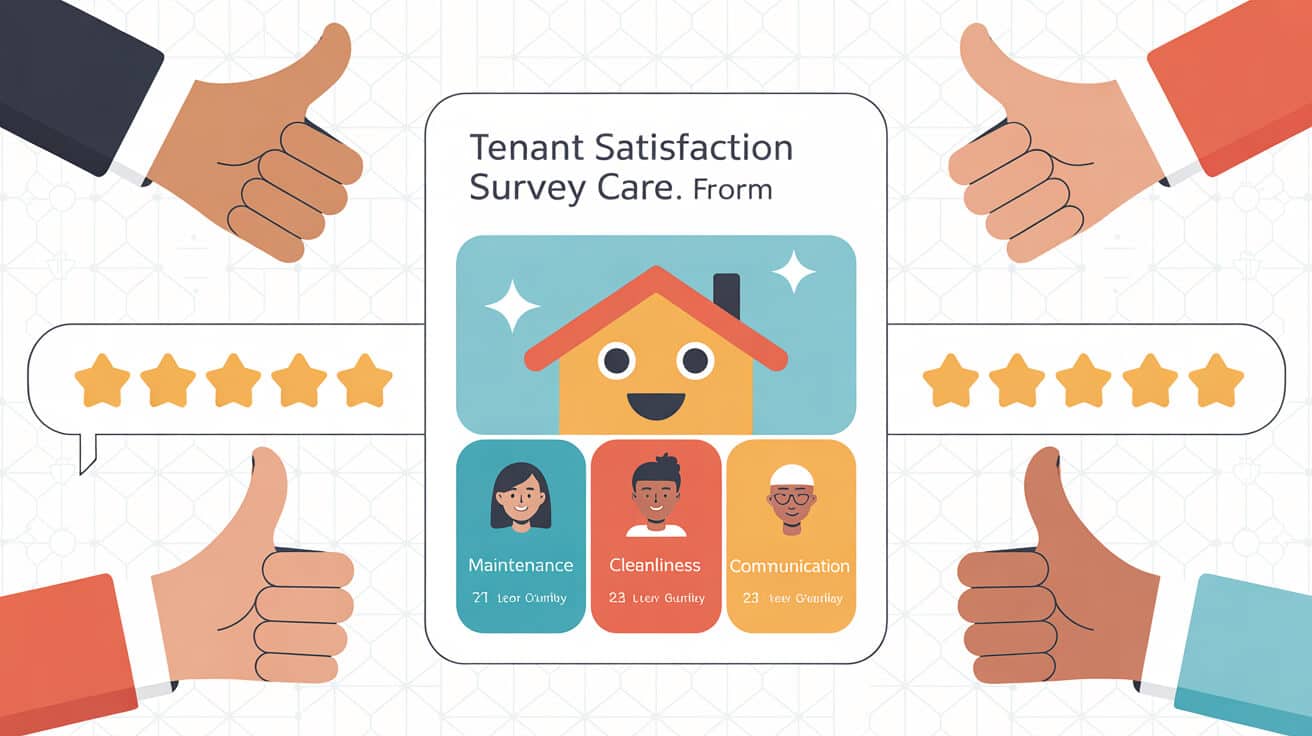
Completing a repair isn’t the finish line. Reporting back to tenants, getting their thumbs-up (or honest concerns), and locking down the evidence truly completes the loop.
Leading landlords and agents cue up automated notifications at each milestone—job logged, scheduled, in-progress, marked completed. Just as valuable: requesting photos or a quick feedback survey right after the work. Even a one-click response catches new faults before they spiral and cements the impression of active management.
Satisfaction tracking after repairs drastically reduces disputes and negative reviews. (Hiscox, [www.hiscox.co.uk/home-insurance/news/landlords-keep-records](https://www.hiscox.co.uk/home-insurance/news/landlords-keep-records))
Nail the Last Mile:
- Alert tenants at every stage—make the process visible.
- Archive all sign-offs, messages, and feedback for at least six years.
- Regularly request post-repair feedback; thank tenants for positive marks and address issues fast.
Closing the loop isn’t just bureaucratic—proper documentation and open dialogue futureproof your tenancies and reputation, even if disputes surface months down the road.
Turn Compliance Chasing Into Advantage—How All Services 4U Levels You Up
If you’re ever left scrambling after a sudden insurance claim, local council letter, or deposit fight, the good news is you can swap firefighting for process—and with All Services 4U, you don’t have to build it all yourself.
Our team audits your current practice, plugs gaps in compliance, and sets up digital-first workflows tailored to the complexity of your property portfolio. We build custom job logs, automate intake and status updates, and handle triage—so issues get routed, tracked, and archived without you missing a thing. And yes, we do all the boots-on-the-ground fixes—planned or emergency—plus compliance templates, legal checklists, and practical support that gets you back to managing, not firefighting.
Protect your time, your reputation, and your legal peace of mind. It’s not just property—it’s your legacy.
Ready to see how resilient your process really is? Book a free maintenance review with All Services 4U, and we’ll help you turn day-to-day repairs into a genuine business advantage. It’s not about fixing things that break—it’s about building systems that never do.
Frequently Asked Questions
What steps ensure UK landlords stay fully compliant when tenants report repairs?
UK landlords must swiftly acknowledge, log, and resolve every repair report, keeping audit-ready records and up-to-date safety certificates to avoid legal scrutiny and reputational risk.
When a tenant flags an issue—no matter how minor—your statutory duties activate instantly. The Landlord and Tenant Act 1985, Housing Act 2004, and Homes (Fitness for Human Habitation) Act 2018 all demand that you address building structure, essential services (heating, water, electrics), and habitability as soon as issues arise. Regulators expect digitally logged responses, not just handwritten filling. Delay or blind spots in this chain expose you to rent repayment orders or prohibition notices if hazards are found. Compliance today hinges as much on traceable, time-stamped records as on physical repair.
A single unlogged complaint can snowball into a five-figure penalty—modern landlords treat documentation as asset protection.
Core Compliance Moves for Landlords
- Instantly acknowledge repair requests (text, email, portal).
- Triangulate every job: structure, access, safety systems.
- Keep EPC, Gas Safety, and EICR certificates current and locatable.
- Log photos, time of action, tenant contact, and repair outcome.
- Back up all documentation digitally for at least six years.
Councils, insurers, tenant advocates, and ombudsman panels increasingly expect digital evidence trails—not loose paperwork or memory. Adopting rigid documentation is now a reputational signal and a competitive defence. Cross-link to your main article for a deeper breakdown of compliance benchmarks and model workflows.
Where Landlords Get Caught Out
- Failing to confirm every tenant report in writing.
- Ignoring “routine” issues that trigger property health concerns (like damp).
- Missing renewal deadlines for safety certificates.
- “Verbal only” arrangements that leave no digital audit trail.
Acknowledge that compliance isn’t just about repairs; it’s about proving you responded—on time, every time.
How quickly must different types of repairs be resolved by landlords in the UK?
Landlords should resolve emergency repairs within 24 hours, urgent issues inside 2–3 days, and routine maintenance within 28 days to meet explicit industry and insurance standards.
Statutory language may mention “reasonable time,” but sector guidance is precise. Emergencies—loss of heating in winter, major leaks, malfunctioning entry doors—require a fix or safe-off within a day. Urgent repairs (faulty electrics, sanitary blockages) should see technician attendance within 72 hours, especially where habitability is affected. Less-pressing jobs (dripping taps, cosmetic damage) must be scheduled and ideally closed within four weeks, though tenants and insurers both favour a quicker pace. Consistent timestamping at all stages keeps you on the right side of audits.
When timelines slip, trust dissolves—most rental complaints start here, not with the repairs themselves.
Quick-Access Repair Timeline Table
| Priority | Repair Deadline | Referenced By |
|---|---|---|
| Emergency | 24 hours | HSE, NRLA, Insurance |
| Urgent | 2–3 days | Ombudsman, ARLA |
| Routine | ≤ 28 days | Best Practice, Shelter |
Rigorous timestamping of each repair step is more valuable than verbal promises, especially when defending against deposit disputes or compliance claims. Automated alerts and tenant updates can cut complaint rates in half (Propertymark 2023).
Common Missteps That Trigger Escalation
- Vague “we’ll get to it” replies with no deadline.
- No written updates during waiting periods.
- Slow response to winter heating failures.
A streamlined, digitally tracked workflow transforms risk into peace of mind for all parties.
Which workflow handles tenant maintenance requests most efficiently from first report to sign-off?
The most reliable approach is a unified digital workflow funnelling all requests into a single log, triaging by urgency, tracking deadlines, updating tenants proactively, and closing with timestamped evidence.
Best-practice workflows start with a central reporting point—property app, portal, or dedicated service email. Every job is logged with date, tenant’s detail, property address, and supporting photos. An immediate confirmation is sent so tenants know the clock has started. Urgency is assigned: emergencies go straight to a technician, urgent tasks are prioritised for next-available slots, routine jobs are grouped for batch scheduling.
Transparent workflows turn repair anxiety into tenant loyalty; uncertainty is the enemy of compliance.
H4: Essential Steps for Bulletproof Repair Handling
- Centralised Intake: Portal, email, or app for all jobs.
- Timestamp Every Step: From request to acknowledgment to fix.
- Live Updates: Text or email progress at each stage.
- Tenant Feedback Loop: Confirm satisfaction on close.
- Digital Photo Record: Before/after images stored per job.
- Contractor Assignment Trail: Who attended, when, and outcome.
- Automated Escalation: Missed deadlines flagged to supervisors.
Tools like All Services 4U, Fixflo, and maintenance CRMs automate crucial milestones—saving you hours and making sure nothing slips through the cracks. Tenants who receive prompt updates are 2x less likely to escalate complaints (Shelter 2023).
Upgrades that Transform Your Workflow
- Replace SMS-only logs with digital platforms—nothing gets lost, nothing’s missed.
- Batch routine works to reduce cost and disruption.
- Standardise template updates for tenants so expectations are always set.
A high-trust, audit-proof process stems from clarity, speed, and communication—not improvisation.
What documentation is essential for each maintenance task, and how long should landlords keep records?
Every maintenance job must have a digital trail: initial request, confirmation to the tenant, all photos and correspondence, contractor details, invoices, and legal certificates—retained for at least six years.
Documentation is the backbone of compliance and rapid dispute resolution. For every repair, start with a time-stamped log of the tenant’s request. Archive your acknowledgment—email, SMS, or portal message—as proof. Record all progress updates, including delays, changes of contractor, or tenant unavailability. “Before and after” photos settle most disputes instantly. Save receipts, work orders, and the attending technician’s details.
When a dispute hits, the winner isn’t the one who ‘did the work’—it’s the one who proves it happened.
H4: Quick Checklist — Maintenance Recordkeeping Essentials
- Tenant report log (date, time, details, and channel)
- Acknowledgment timestamp (email, SMS, app)
- Full repair conversation history
- Before/after photographic evidence
- Contractor identity and work date/time
- Invoices and supporting receipts
- Current safety certificates (Gas, EICR, EPC)
| Record Type | Details Needed | Best Storage |
|---|---|---|
| Report Log | Issue, date, tenant, channel | Digital folder or CRM |
| Photos | Before/after, timestamped | Job-ticket gallery |
| Contractor Log | Name, ID, arrival/completion | Contractor register |
| Proof of Completion | Signed-off doc, feedback | Linked to job record |
| Certificates | Gas/EICR/EPC, renewals | Compliance dashboard |
Records should be stored for at least six years to satisfy the Limitation Act 1980 and to defend against long-term liability or insurance claims. Tools like Fixflo and Inventory Hive help automate retention schedules.
How should tenants respond if repair concerns are ignored or delayed?
Tenants best protect themselves by formally documenting each request and escalation, gathering photographic evidence, and, when landlords do not act, notifying their local council—never withholding rent without guidance.
When repairs drag on, tenants should log every email, call, or portal entry, keeping clear time-stamps. Written, dated reminders serve as crucial proof if enforcement is needed. After two failed attempts, escalate by contacting your council’s environmental health team, who can inspect and enforce repairs. The right documentation ensures council officers act swiftly and your case is prioritised.
A paper trail is the ultimate lever—evidence transforms a polite request into enforceable action.
H4: Proven Escalation Steps for Tenants
- Archive each repair request and reminder—screenshots included.
- Emphasise health, safety, or vulnerability if relevant.
- Notify the landlord in writing before escalation.
- Contact Environmental Health or tenancy support (Shelter, CAB).
- Collate photos, timings, and all messages for inspection.
Never withhold rent on your own—seek expert advice first, as it risks eviction. Most councils act quickly once presented with clear, polite evidence of neglect. Digital checklists and sample escalation letters are linked from your main guide.
What process improvements most effectively prevent landlord-tenant repair disputes before they start?
The strongest dispute prevention lies in transparent, digital-first workflows—central reporting, time-stamped logs, photo evidence, routine tenant updates, and annual reviews, possibly with external audits for maximum trust.
Forward-looking landlords centralise all maintenance reporting (not just emergencies). Timestamp every step, log communications, and record photographic proof for each job—these are your shield against disputes and regulatory headaches. Categorise all repairs by urgency to prioritise life-safety first. Schedule annual reviews to spot repeated issues, lapsed certificates, or missed updates, and commission impartial audits from firms like All Services 4U to benchmark practices.
Disputes rarely fester in the open—when maintenance is visible, organised, and well-communicated, most risks dissolve.
H4: Five Habits for Risk-Free Repair Management
- All repair requests through one easy-access channel.
- Routine written updates at each stage—tenants always know what’s next.
- Escalate urgent issues automatically—never let a red flag wait.
- Visual proof (before/after) with every completed job.
- Annual workflow review or third-party peer audit.
Modern property managers find that properties with visibly tracked repairs, current compliance documents, and instant tenant communication have half the complaint volume of less-digitalized peers. Full workflow templates and recommended audit partners are detailed in your main resource.



